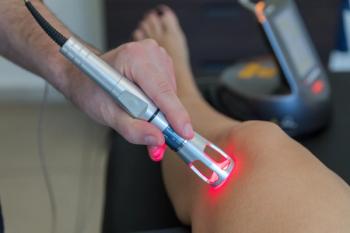
Latest Pearls in Wound Healing
Robert Kirsner, MD, PhD, discusses how to heal difficult wounds at the 2022 SDPA Fall Conference.
At the 2022 Society of Dermatology Physician Assistants (SDPA) Conference in Miami, Florida, Will Kirsner, MD, PhD and director of the University of Miami Hospital Wound Center and Chief of Dermatology at the University of Miami Hospital held a session called "Healing the Unhealable Wound". In an interview with Dermatology Times, Kirsner gave some of the talking points of his presentation.
Transcript:
Robert Kirsner, MD, PhD
Hi, I'm Robert Kirsner, MD. I'm chair of dermatology at the Dr. Phillip Frost Department of Dermatology and Cutaneous Surgery at the University of Miami Miller School of Medicine. My presentation is about hard-to-heal wounds. And I think it's it's something that most people who practice dermatology see, but don't necessarily learn. Because most places whether you're a physician or physician's assistant, there's not a lot of focus on that, and as part of your dermatology training, it's a big problem. It's a problem that affects many, many people. It's important because of how costly the diseases are, and they have, in some cases really significant outcomes. So just to kind of put some numbers on it. Each year, probably about 6 million Americans have these non-healing chronic wounds; they cost our society conservative estimates, indirect costs alone, probably close to $40 billion. And as an example, if you have diabetes, with a diabetic foot ulcer, your 5-year mortality rate is probably somewhere between 1/3 and 1/2. So meaning a third or a half of patients with a diabetic foot ulcer die within 5 years, and that's higher than people with prostate, prostate cancer or breast cancer. So these are really important diseases. So clearly, it's a big problem. But most people don't know you've had to approach this in a systematic way because it's not part of their training. So in my presentation, I hope to lay out a systematic way to think about these patients with chronic wounds, whether they're the common chronic wounds like venous leg ulcer, which is the most common leg ulcer or a diabetic foot ulcer, which is the most common foot ulcer, or more uncommon wounds, such as some of the dermatologic diseases that become wounds, vasculitis, or malignancies or inflammatory conditions like pyoderma gangrenosum. So how to approach making a diagnosis, you have to make sure the appropriate tests are done, and then go through a systematic way to give both standard care for a diabetic foot ulcer, like offloading, and debris movement. And for venous leg ulcers, it would be things like compression, then if a patient isn't responding, then moving on and thinking about what else can be done for these patients and especially in the end, with the idea of using things that have evidence, you could do anything you want for these patients. But these diseases are so important, and the patient costs are so high, we want to bring, high-quality evidence-based treatment for these patients. So my presentation is really going to be based around that kind of paradigm of the common chronic wounds and the uncommon chronic wounds, and then how to systematically think about and address them.
Newsletter
Like what you’re reading? Subscribe to Dermatology Times for weekly updates on therapies, innovations, and real-world practice tips.
















